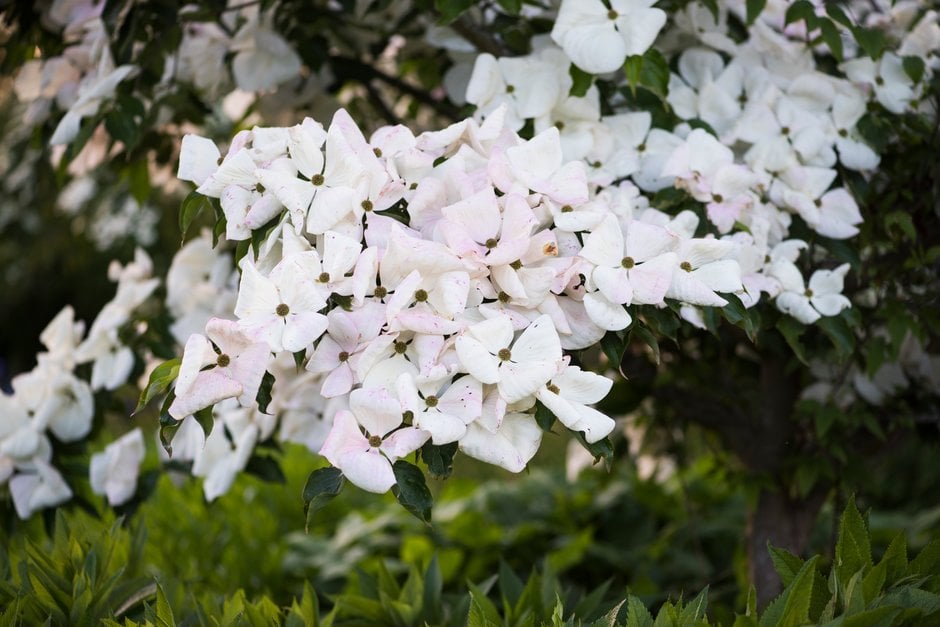Cornus × elwinortonii Venus ('Kn30 8'PBR) (Jersey Star Series)

dogwood [Venus]
A vigorous, spreading deciduous tree up to 6m tall and 4m wide. Glossy green, oval to egg-shaped leaves turn attractive shades of yellow, red, orange and purple in autumn. In spring, established trees bear a profusion of small, dense, green flowerheads surrounded by showy, large creamy-white bracts up to 15cm across. These may be followed in autumn by raspberry-like red fruits
Size
Ultimate height
4–8 metresTime to ultimate height
20–50 yearsUltimate spread
2.5–4 metresGrowing conditions
Moisture
Moist but well–drained, Well–drainedpH
Acid, Alkaline, NeutralColour & scent
| Stem | Flower | Foliage | Fruit | |
| Spring | Green Cream White | Green | ||
|---|---|---|---|---|
| Summer | Green | |||
| Autumn | Orange Purple Red Yellow | Red | ||
| Winter |
Position
- Full sun
- Partial shade
Aspect
South–facing or North–facing or West–facing or East–facing
Exposure
Exposed or Sheltered Hardiness
H5Botanical details
- Family
- Cornaceae
- Native to GB / Ireland
- No
- Foliage
- Deciduous
- Habit
- Bushy
- Genus
Cornus can be deciduous shrubs or trees, or creeping, woody-based perennials, some with brightly coloured young stems. Tiny flowers are borne in dense clusters, sometimes with showy bracts. Many have fine autumn colour
- Name status
Trade
How to grow
Cultivation
Grow in fertile, humus-rich well-drained soil in sun or partial shade. For more advice, see flowering dogwood cultivation
Propagation
Propagate by grafting or from semi-hardwood cuttings
Suggested planting locations and garden types
- Cottage and informal garden
- City and courtyard gardens
- Flower borders and beds
Pruning
Pests
Generally pest-free but may be susceptible to horse chestnut scale
Diseases
May be susceptible to cornus anthracnose and honey fungus
Get involved
The Royal Horticultural Society is the UK’s leading gardening charity. We aim to enrich everyone’s life through plants, and make the UK a greener and more beautiful place.
